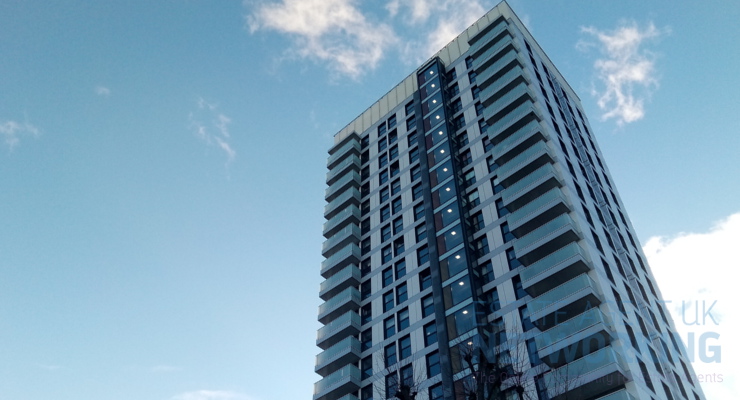Green Building 101: Understanding Eco-Friendly Construction
Green building, often referred to as sustainable or eco-friendly construction, is a concept that focuses on designing, constructing, and operating buildings in ways that minimize their impact on the environment while maximizing energy efficiency and occupant comfort.
With the world increasingly concerned with environmental sustainability, green building practices have gained immense popularity. In July 2020 for example, Lafarge & Holcim introduced “green concrete” in the U.S. in a bid to boost green building.
Let’s delve in deeper and explore the fundamental principles of green building and why it’s crucial for the future of the construction industry and our planet:
Why Green Building Matters
Green building isn’t just a trendy concept; it’s essential for several reasons. First, it reduces the environmental impact of construction and operation which helps to lower greenhouse gas emissions, conserve resources, and minimize waste. This creates healthier living and working environments that provide better productivity and well-being for occupants.
Secondly, green buildings provide several economic benefits. Although it may have a higher initial cost, the long-term savings from reduced energy and water consumption, lower maintenance costs, and improved occupant health can outweigh the upfront investment.
Additionally, green building practices help builders meet environmental regulations and avoid costly penalties. Furthermore, green building prepares structures for a sustainable future by incorporating resilient designs and energy-efficient technologies that will remain relevant as environmental challenges persist.
Essential Features of Green Building
Energy Efficiency
One of the core principles of green building is improving energy efficiency. Traditional buildings are notorious for their high energy consumption, which contributes significantly to greenhouse gas emissions. Green buildings, on the other hand, prioritize energy-efficient designs and technologies.
These designs may include better insulation, efficient windows, and modern HVAC systems. Furthermore, these buildings often incorporate renewable energy sources like solar panels. This reduction in energy consumption ensures that green buildings not only lower operating costs but also minimize their carbon footprint, making them more sustainable in the long run.
Proper Site Selection
Choosing an appropriate site is an essential aspect of green building. Green building principles encourage the selection of sites that minimize environmental impact, preserve natural habitats, and promote efficient land use.
Before construction, for example, you should first know whether your construction project is within a wetland or waterways zone. These zones are protected by the federal laws and you are not allowed to encroach. While waterways are more visible, wetlands are not always obvious and you might need Wetlands Mapper tools and experts to correctly identify whether your site is within the wetlands region.
This way, you avoid colliding with the legal authorities as this can lead to costly recovery expenses and project timeline impacts.
Use of Sustainable Materials
Eco-friendly construction focuses on the use of sustainable materials. This involves the choice of materials that are renewable, locally sourced or have a lower environmental impact. For instance, you can use bamboo, a rapidly renewable resource, for flooring or cabinets. Additionally, you can consider reclaimed wood and recycled materials to reduce the demand for new resources.
Furthermore, you can select materials that emit fewer volatile organic compounds (VOCs) to contribute to better indoor air quality. Sustainable materials play a crucial role in reducing the environmental impact of construction projects and promoting healthier living environments.
Water Efficiency
Water is a finite resource, and green building emphasizes its efficient use. Use low-flow faucets, dual-flush toilets, and rainwater harvesting systems for your eco-friendly building. These measures reduce water consumption and lower water bills. Moreover, they help reduce the burden on local water supplies, especially in water-scarce regions.
Waste Reduction and Recycling
During construction and demolition, significant amounts of waste are generated. Green building practices prioritize waste reduction through careful planning and recycling. This involves reusing materials when possible and ensuring that any waste is properly sorted and sent for recycling instead of ending up in a landfill. By minimizing waste, green building reduces the environmental impact of construction projects.
Good Indoor Air Quality
Indoor air quality is a crucial aspect of green building. Harmful chemicals and poor ventilation can lead to health problems for occupants. To address this, use materials with low VOC emissions, provide adequate ventilation, and incorporate air purification systems. Improved indoor air quality contributes to the health and well-being of the building occupants.
Proper Certification and Standards
There are various green building certification programs and standards that provide guidelines for eco-friendly construction. One of the most well-known is LEED (Leadership in Energy and Environmental Design), which evaluates buildings based on their sustainability and environmental performance.
Other programs, like BREEAM (Building Research Establishment Environmental Assessment Method), also assess and certify buildings according to environmental criteria. These certifications help consumers, investors, and builders identify and support green construction practices.
Final Remarks
Embracing green building practices is not just an option but a necessity. Taking proper steps to understand and implement the principles of eco-friendly construction is the best way to reduce our impact on the environment whilst also saving money in the long run. After all, we would want to create healthier, more sustainable buildings for generations to come. So, whether you’re a builder, homeowner, or investor, green building is a concept that should be at the forefront of your considerations in your construction projects!









